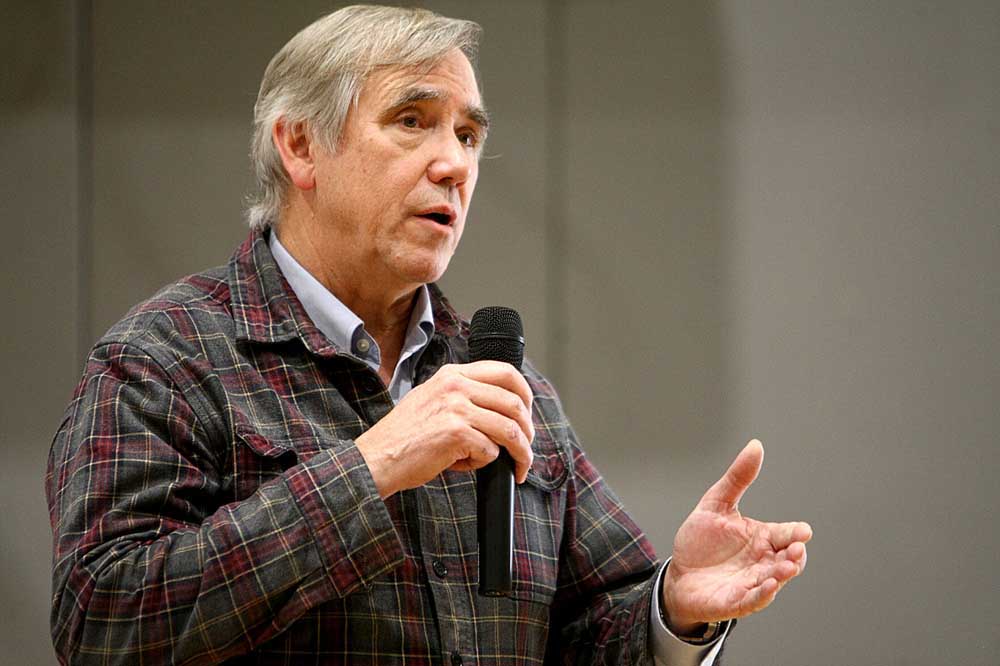Capital Chatter: Brown proposes, but will legislators accept?
Published 8:00 am Thursday, November 29, 2018

- Capital Chatter: Dangerous times for the Oregon Legislature
Gov. Kate Brown’s budget presentation this week was part budget and part State of the State address. My favorite line: “Oregon’s state motto is NOT she rests on her laurels.”
Brown heralded her 2019-21 budget proposal as a turning point, which elicited an apt observation afterward from Republican state Sen. Cliff Bentz of Ontario. Bentz, who attended the budget presentation, noted that Democrats have been in charge throughout his 11 years in the Legislature. He found it odd that Brown would call for a “turning point” after those years of Democratic control.
Trending
The budget discussions in next year’s Legislature’s will be worth watching. There’s a saying, “The governor proposes; the Legislature disposes,” meaning that the Legislature determines the actual budget and dispenses the money through it. But “dispose” often has been how lawmakers have treated a governor’s recommended budget. They disposed of it; sometimes harshly denouncing it, sometimes politely ignoring it.
Brown and her staff will be working with three people who have budget experience but are new to the role of co-chairing the Senate and House’s joint budget committee: Sens. Betsy Johnson, D-Scappoose, and Elizabeth Steiner Hayward, D-Beaverton, and Rep. Dan Rayfield, D-Corvallis.
Budget decisions, like other legislating, depend as much on personal relationships as they do public policy. For example, it is revealing that Senate President Peter Courtney, D-Salem, and House Speaker Tina Kotek, D-Portland, created a special joint committee to recommend education reforms – and more education spending – instead of sending those issues through the existing Senate and House education committees.
Brown’s proposed budget is balanced, as is required by state law. She made an intriguing political calculation by also proposing an additional $1.9 billion in education spending on top of that balanced budget. State universities, community colleges and various education initiatives would only get that additional money if the Legislature increased taxes. In doing so, Brown turned those organizations into a potentially powerful coalition to advocate for higher business – and possibly other – taxes.
Almost as soon as she finished the budget presentation, Brown turned to that lobbying. She had several days of meetings arranged with university presidents, community college leaders, Oregon School Boards Association, children’s advocates and other groups.
More “lobbying” on Monday: Brown will lead a panel at the Oregon Leadership Summit on Monday with Julia Brim-Edwards of Nike, a member of the Portland School Board; Maria Pope, CEO, Portland General Electric; and Lisa Vance, chief executive, Providence Health & Services in Oregon.
Trending
I expect the business representatives to echo Brown’s call for revenue “reform” to pay for education investments. But unlike the rest of the day’s presenters, they won’t say tax increases are dependent on PERS reforms and cost containment.
Even as the business community strives to come together on political issues, it splinters — which is why public-employee unions consistently outmaneuver the business side in the Oregon Capitol, and often in local politics.
Nike and some other businesses joined with unions in the Coalition for the Common Good to push the tax increases next year. Meanwhile, several corporations formed Oregon Manufacturers and Commerce, even as two other business associations merged into Oregon Business & Industry.
Until those business groups and others follow the unions’ example and collaborate on well-defined common goals, they frequently will find themselves on the losing end at the Legislature.
Budget notes: Brown announced her budget Wednesday, which was early. The 450-page document is online but printed copies might not be available until today, because Nov. 30 was the original announcement date. … A governor’s budget has a short shelf-life, except as a door stopper. To save money, fewer copies were being printed this year. … Brown’s press conference was open to media, legislative officials and budget staff, which is as it should be. The governor’s staff treated people equitably: One of the individuals excluded was a lobbyist who is married to a high-ranking member of the Brown administration. … Brown’s communications staff wisely reversed course and allowed her policy aides to discuss the budget on the record, instead of only on background.
Political communicators: Stringing outdoor Christmas lights at home can be hazardous. Robin Maxey, who is Courtney’s communications director, suffered a nasty fall. … Preston Mann, who was the spokesman for House Republican, has been hired as director of public affairs for Oregon Manufacturers and Commerce. His first press release was on Brown’s budget proposal. He commended her commitment to investing more in public schools and said discussion of raising revenue should include reducing the cost of state government.
Dick Hughes, who writes the weekly Capital Chatter column, has been covering the Oregon political scene since 1976. Contact him at TheHughesisms@Gmail.com, Facebook.com/Hughesisms, YouTube.com/DickHughes or Twitter.com/DickHughes.





